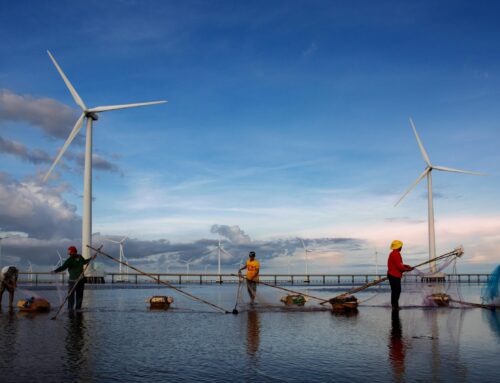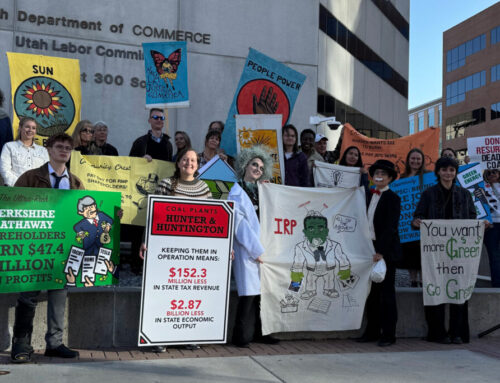COP30 Brazil: Uncertainty Grows 10 Years After Paris
October 30, 2025
ARTICLE
By Ethan Zindler, Countries and Policy Research, BloombergNEF
BloombergNEF is hosting events Nov. 3-5 in Sao Paulo, Brazil, ahead of the 30th Conference of the Parties to the United Nations Framework Convention on Climate Change in Belem. COP30 marks 10 years since the landmark Paris Agreement and arrives at a moment that trade and geopolitical frictions grow between nations. Some countries are quietly wavering on their climate commitments on the eve of the meeting while the US very loudly questions the entire concept of global warming.
Even so, record levels of capital continue to flow into clean energy technologies as solar and electric vehicle deployment rates reach new heights. Still, the transition to a lower-carbon economy is not moving nearly fast enough to deliver on the ambition for net-zero emissions agreed in Paris a decade ago. This briefing summarizes BNEF’s latest analysis on key climate and energy transition issues and provides data to support discussions during the week.
- The physical impacts of climate change are already a significant financial risk that costs the global economy at least $1.4 trillion per year. A country’s preparedness for these impacts can materially influence the probability of loss for the assets as well as for its companies and communities. BloombergNEF has developed a framework and country scorecard that examines the climate adaptation preparedness of major economies.
- Global renewable energy investment rose to record-breaking levels in the first half of 2025, according to BNEF’s Renewable Energy Investment Tracker. Solar, wind and other renewable energy projects attracted a total of $386 billion in new commitments in the period – the highest half year on record and up 10% from the same period last year. The findings underscore the resilience of the clean energy sector in the face of policy and trade uncertainty. It also is a signal of the enduring competitiveness of wind and solar power.
- Investment trends varied by market, too, and here a two-speed transition appears in stark relief. The US had a major drop in investment, down 36% half-on-half, as the new administration tore up the policy and trade landscape. The European Union, by contrast, delivered strong growth with a 63% surge since 2H 2024. Developers and investors may be starting to reallocate capital from the US to Europe. China remains the largest market for renewable energy investment, accounting for 44% of the global total.
- Renewable energy investment in emerging markets excluding China rose from $49 billion in 2015 to $140 billion in 2024. Yet these economies captured only 19% of global clean-energy investment in 2024, averaging about 18% over the past decade. Most capital remains concentrated in a few larger or higher-income markets such as India, Brazil, and South Africa. Between 2015 and 2024, upper-middle-income countries received about 43% of total renewable investment. Low-income nations attracted only 1%.
- Solar delivered 75% of the 806 gigawatts of new power generation capacity added worldwide in 2024, up from just 20% in 2015. Solar is the most widely adopted generation technology because of falling module prices, ease of deployment and scalability from rooftop to utility-scale projects.
- Trade barriers to clean-tech equipment are rising. Recent tariff revisions in developed countries – notably the US – have grabbed the world’s attention. But when it comes to clean tech, emerging economies have comparatively low barriers to trade. That could change: emerging markets have been active in raising trade barriers in recent years, and higher tariffs are being considered across many of these markets.
- Industrial policy is taking on renewed importance in the energy transition. China’s entrenched lead in clean-tech manufacturing defines today’s landscape, and governments elsewhere are seeking to preserve and develop local clean-tech manufacturing. Many nations seek to localize the manufacturing of electric vehicles (EVs), batteries, and solar and wind products. These include large emerging as well as developed economies.
- BNEF has analyzed the 2035 targets of 13 major economies included in the New Energy Outlook 2025 (for clients: web I terminal) – referred to as “NEO markets.” We compare the change in emissions implied by their new Nationally Determined Contribution (NDC) goals for 2035 with the trend under our Net Zero Scenario, which covers energy-related CO2 emissions. This scenario represents a credible pathway to net zero worldwide by mid-century and holding planetary warming to 1.75C above pre-industrial levels. At the time of writing, seven of the 13 have submitted new NDCs or announced 2035 targets. The US invalidated its NDC when it withdrew from the Paris Agreement.
- The electrification of the road transport fleet is already displacing around 2 million barrels per day (m b/d) of oil as of 2024, up 12% against the previous year. This is equivalent to Germany’s daily oil consumption. The continued pivot toward low-emission miles causes oil demand from road transport to peak by 2029 under our Economic Transition Scenario (ETS) at around 44.4m b/d, some 2.1m b/d higher than in 2024. This peak occurs two years later than in our previous outlook due to slower EV adoption in the US.
- Power demand from data centers is generating significant new demand for gas. BNEF analysis suggests that the current pipeline of data centers could add 6.8 billion cubic feet per day of demand in the US by 2035, equivalent to about 8.4% of average daily consumption in 2024.
Access critical insights ahead of COP30
Read the full report now.
Related Content
The latest from BloombergNEF delivered to your inbox
Sign up for BNEF’s free newsletter.
Search
RECENT PRESS RELEASES
Related Post



